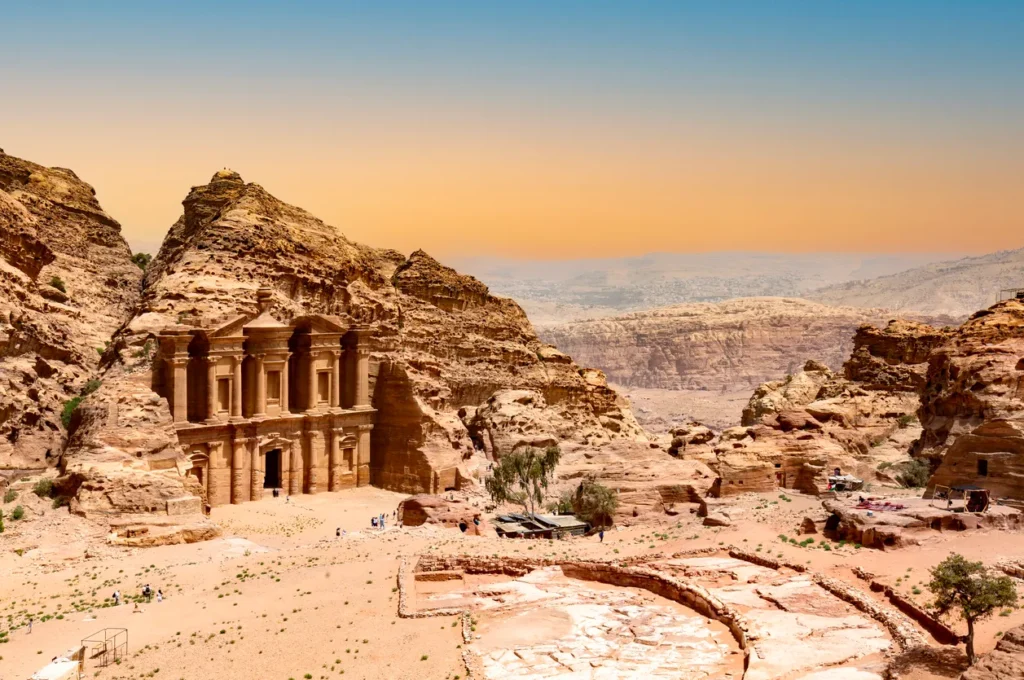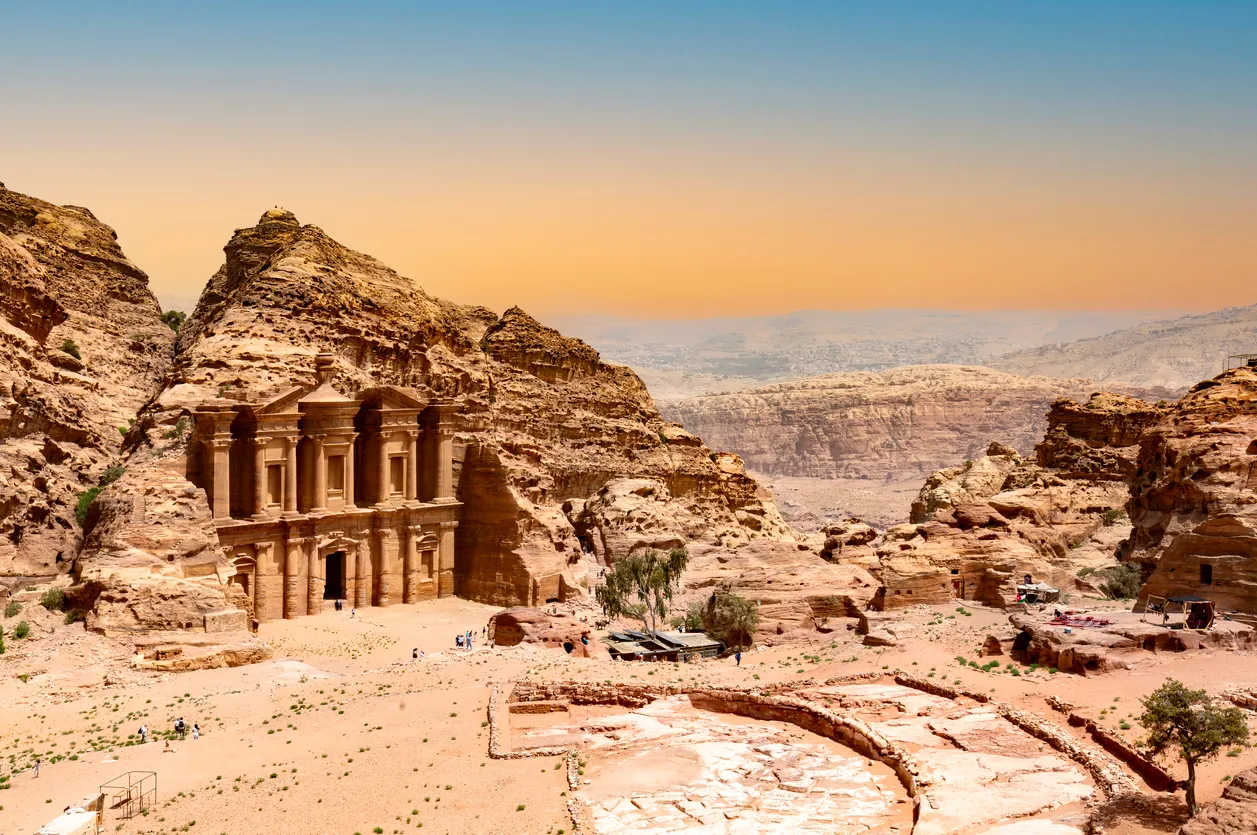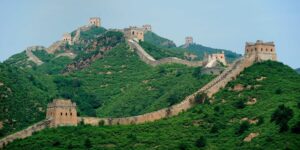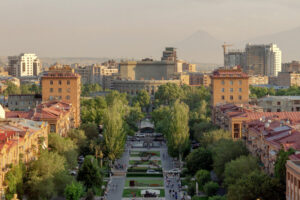Petra, Jordan isn’t just an archaeological site; it’s a living, breathing testament to human ingenuity, history, and natural beauty. Nestled in the rugged mountains of southern Jordan, Petra has captivated travelers, historians, and adventurers alike for centuries. If you’re planning your next adventure or simply want to learn more about this breathtaking destination, this article is your ultimate guide to experiencing Petra the way it truly is—raw, authentic, and utterly unforgettable.
Unveiling Petra: The Lost City of the Nabateans
Long before modern civilization stamped its authority on the Middle East, the Nabateans carved out an empire in the heart of the desert. Petra, often referred to as the “Rose City” because of the color of its stone, was their crown jewel. Built into the sheer cliffs and hidden away from the prying eyes of empires, Petra served as a vital hub for trade, culture, and innovation.
The city’s ingenious water management system, intricate facades, and mysterious tombs are not just relics of the past—they’re a stark reminder of a time when engineering and artistry were one. Visitors wandering through the narrow Siq, the dramatic gorge leading to Petra’s iconic Treasury, can’t help but feel the weight of history. Every step reveals secrets of an ancient civilization that thrived despite the harsh desert conditions.
A Walk Through History: Must-See Landmarks in Petra
The Treasury (Al-Khazneh)
No visit to Petra is complete without marveling at the Treasury. This breathtaking façade, carved from a single rock, is often the first thing that comes to mind when people think of Petra. But don’t be fooled by its beauty; it’s a symbol of power, wealth, and the artistic prowess of the Nabateans. The intricate details etched into the stone tell stories of ancient rituals, beliefs, and an advanced society that valued both function and form.

The Monastery (Ad Deir)
A little further up the mountain lies the Monastery, or Ad Deir, one of Petra’s most impressive monuments. Larger than the Treasury, the Monastery demands both physical effort and mental resolve to reach. The climb is challenging, but every drop of sweat is repaid with panoramic views that stretch across the desert landscape. Standing before this colossal structure, you’ll feel the energy of centuries past, and it becomes clear why Petra continues to draw adventurers from all over the globe.
The Royal Tombs and the Byzantine Church
Petra isn’t just about grand facades. Hidden around the site are numerous tombs and remnants of everyday life that offer a more personal glimpse into the lives of the Nabateans. The Royal Tombs, with their commanding presence, reveal the importance of honor and legacy in Nabatean society. Meanwhile, the Byzantine Church, with its well-preserved mosaics, speaks to the region’s later chapters and the diverse cultures that have left their mark on Petra.
Practical Tips for Visiting Petra
While the allure of Petra is undeniable, getting the most out of your visit requires some planning and grit. Let’s be honest—traveling to such a historic and remote site isn’t always a walk in the park.
When to Go
The best times to explore Petra are during the spring (March to May) and autumn (September to November). These periods offer moderate temperatures ideal for hiking and sightseeing. Summer can be brutally hot, while winter nights might leave you shivering. Plan accordingly to avoid weather-related disappointments.
How to Prepare
Petra is a vast site, and exploring it requires comfortable walking shoes, plenty of water, and a good dose of stamina. The terrain can be uneven, so investing in a reliable pair of hiking boots isn’t just a suggestion—it’s a necessity. A hat, sunscreen, and a camera with extra batteries are also must-haves for a day in the desert.
Navigating the Site
Don’t expect everything to be tourist-friendly. Some areas have minimal signage, and the paths can be confusing. Hiring a local guide can make a world of difference. Not only will you get the inside scoop on Petra’s hidden gems, but you’ll also gain insights into the cultural and historical significance of the ruins that you’d never find in a guidebook.
Respecting the Heritage
Petra is a UNESCO World Heritage site, and its preservation is paramount. While the urge to leave a mark might be strong, remember that every scratch or defacement is a loss to history. Show respect for the site by following all guidelines and leaving nothing but footprints.
Petra’s Place in Modern Tourism and Future Perspectives
In the age of Instagram and rapid-fire travel content, Petra stands out not just for its visual appeal but for its deep, resonant history. Modern tourism has given the site a new lease on life, but it’s a double-edged sword. Increased foot traffic brings revenue and global recognition, yet it also poses significant challenges for conservation.
Local authorities and international organizations are now working together to balance tourism with sustainability. Forward-thinking initiatives, including improved infrastructure, visitor management systems, and digital reconstructions of damaged sites, aim to preserve Petra for future generations without diluting its authenticity. This isn’t about turning Petra into a theme park; it’s about respecting its past while adapting to the needs of the future.
The Role of Technology
Digital tools and augmented reality are beginning to change the way we experience ancient sites. Imagine standing before the Treasury with your smartphone, overlaying historical reconstructions that show you how the city might have looked in its heyday. While this technology can never replace the raw experience of walking through Petra, it offers a fascinating glimpse into what once was, and it’s a testament to how ancient wonders can be appreciated in a modern world.
Sustainable Tourism Practices
Petra’s future hinges on sustainable tourism. This means not only preserving the physical site but also ensuring that the local community benefits from the influx of visitors. Sustainable practices include supporting local artisans, engaging with community-led tours, and investing in eco-friendly accommodations. These practices not only reduce the environmental footprint of tourism but also foster a deeper connection between visitors and the local culture.
The Human Element: Stories and Legends of Petra
Every stone in Petra has a story, and every visitor adds their own chapter to its ongoing legacy. Locals share tales of ancient rituals, secret passages, and even ghost stories that have been passed down through generations. Whether you’re a history buff or an adventure seeker, the human element of Petra is what makes it truly special.
Personal Reflections
For many, the journey to Petra is more than just a trip—it’s a transformative experience. Standing before the grandeur of the Treasury or taking a moment of solitude in a quiet nook, you might find yourself reflecting on life, legacy, and the passage of time. The stark beauty of the desert juxtaposed with the intricate artistry of ancient architecture can inspire profound personal insights and a renewed appreciation for the enduring spirit of human creativity.
Local Interactions
Engaging with the local Bedouin communities can offer a fresh perspective on Petra. These communities have deep-rooted connections to the land and its history. Listening to their stories, sharing a meal, or even joining a local guide can add layers of meaning to your visit. It’s a reminder that Petra isn’t just about the past—it’s also about the present and the people who continue to call this extraordinary place home.
Final Thoughts: Petra as a Symbol of Resilience and Innovation
Petra, Jordan, isn’t a relic to be admired from a distance; it’s a vibrant symbol of human resilience, innovation, and the timeless quest for beauty. The city’s ability to thrive in the harsh desert environment is a lesson in adaptability and ingenuity. From the ingenious water systems to the breathtaking rock-cut facades, Petra challenges modern travelers to think differently about history and progress.
For those who venture off the beaten path, Petra offers more than just a glimpse into the past—it invites you to be part of a larger narrative. It’s a call to explore, to learn, and to appreciate the intersection of natural beauty and human achievement. In an era where everything seems to be moving faster than ever, taking the time to explore Petra can be a grounding, even transformative, experience.
So, pack your bags, lace up those hiking boots, and prepare for an adventure that’s as demanding as it is rewarding. Petra isn’t just a destination—it’s an invitation to step into a story that has been unfolding for millennia. And in doing so, you become part of that story too.
Whether you’re a seasoned traveler or a curious explorer, Petra, Jordan, has something to offer everyone. It’s raw, it’s real, and it’s waiting for you to discover its secrets. Embrace the journey, and let Petra show you what it means to truly witness history in the making.
Video Wonders of Petra, Jordan
Remember: Petra is not just a site, but a vibrant testament to the enduring spirit of human creativity and resilience. With careful planning and respect for its heritage, your visit can be both an unforgettable adventure and a step toward preserving one of the world’s greatest treasures.



